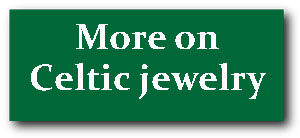The Tara Brooch dates from about 700AD and is widely regarded as one of the masterpieces of early Irish art and craftsmanship.
It’s one of about 50 ornate Irish brooches dating back more than a thousand years that have so far been discovered.
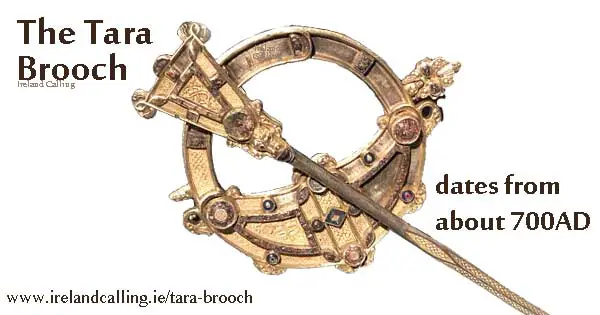
The brooch is seven inches long and made mostly of silver-gilt inlaid with semi-precious stones.
The brooch doesn’t have any religious motifs and is thought to have been made for a man of extremely high status such as a king or a clan leader.
It has inspired numerous copies and adaptations which have become one of the mainstays of modern Irish and Celtic jewellery shops. Despite the romance of its name, the brooch has no connection with Tara, the ancient seat of Ireland’s High Kings.
Instead, its iconic title came directly from Victorian marketing and commercialism.
Chance discovery on a deserted Irish beach
The brooch may have been lost for more than a thousand years before it was discovered by an Irish woman, or possibly one of her sons, in August 1850.
The woman said she was walking along the beach at Bettystown in Co Meath when she saw a box poking out of the sand.
She opened it and found the Tara Brooch inside, perhaps the first time anyone had seen it for hundreds of years.
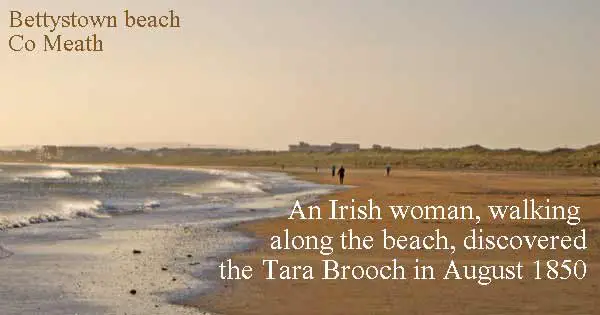
Historians have cast doubt on the accuracy of the story, suggesting that the woman had actually found the brooch much further inland.
She didn’t want to admit to this because the landowner may have laid claim to the brooch if it had been found on his property. The woman may have realised that the beach, by contrast, was common land and so she would be able to keep the brooch for herself.
In the event, she didn’t keep it for long. There was a revival of interest in Celtic art and jewellery in the mid-19th century and so the woman sold her newly discovered brooch to a dealer who later passed it on to one of Ireland’s leading jewellers, George Waterhouse from Dublin.
Waterhouse was a smart operator who was already running a successful business selling Celtic revival jewellery. He wanted to cash in on the growing interest in early Irish art so he named his new acquisition the ‘Tara Brooch’ to evoke the romance and prestige of the ancient Irish high kings.
It was a clever marketing ploy and added to the interest in the brooch. To this day there are many people who believe the brooch is associated with Tara and Irish royalty.
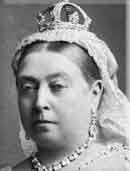
The ‘royal’ pedigree was enhanced when Waterhouse exhibited the brooch before Queen Victoria when she visited Ireland in 1853. He also took it to the Great Exhibition in London in 1851 and to the Exposition Universelle in Paris.
Within a few years jewellery manufacturers all over the world started selling replicas, a practice that still continues to this day.
The brooch was acquired by the Royal Irish Academy in 1872 and later passed on to Ireland’s National Museum where it is now on display.
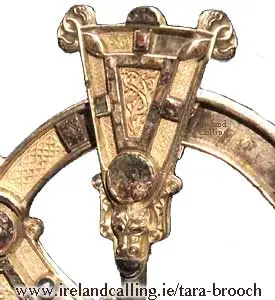
The ‘pseudo-penannular’ style of the Tara Brooch
The brooch is usually described as pseudo-penannular in design. The term annular means made as a circle or ring. Penannular refers to Celtic brooches in which the ring is incomplete, or not fully closed.
The term pseudo-penannular refers to brooches where the ring is closed but nevertheless displays features of a pennanular or open ring.
This could be that the ring is open except for a narrow section joining the two ends.
Or, as in the case of the Tara Brooch, the ring is closed but has design features emphasising where the gap would be if it were an open ring.
The National Museum of Ireland describes how the Tara Brooch has gold adornments including intricate filigree panels “depicting animal and abstract motifs that are separated by studs of glass, enamel and amber”.
A silver chain is connected to the brooch by a swivel attachment “formed of animal heads framing two tiny cast glass human heads”.
The museum says: The Tara Brooch can be considered to represent the pinnacle of early medieval Irish metalworkers’ achievement. Each individual element of decoration is executed perfectly and the range of technique represented on such a small object is astounding.”
The Tara Brooch is probably Ireland’s most celebrated piece of jewellery.
More popular articles and videos
The real life mystery of what Maureen O’Hara whispered to make John Wayne look so shocked
Matt Damon winning hearts and minds with charm assault on Ireland
Action hero Tom Cruise was once attacked by an old man in a Kerry pub
Liam Neeson speaks about his late wife in emotional interview
Dating site explains why Irish men make wonderful husband material
Billy Connolly says public should ignore politicians and listen to comedians
Take a look inside Hollywood star Saoirse Ronan’s stunning Irish home
